I’ve spent countless hours browsing furniture stores, both online and in person, trying to find pieces that balance style, quality, and price. When it comes to furnishing a home, IKEA and Living Spaces are two names that often come up.
My goal here is to break down the pros and cons of each, sharing my experience as a shopper to help you decide which fits your needs. From affordability to design, durability to delivery, I’ll compare these brands in detail, using a conversational yet analytical lens to guide you through your furniture-buying journey.
A Brief Comparison Table
| Feature | IKEA | Living Spaces |
| Price Range | Budget-friendly, starting at $10 for small items, up to $2,000 for large furniture | Mid-range to high-end, starting at $50, up to $5,000+ for premium pieces |
| Design Style | Modern, minimalist, Scandinavian-inspired | Eclectic, modern, traditional, customizable options |
| Quality | Functional, budget-driven, often particleboard | Higher-end, mix of solid wood and engineered materials |
| Customization | Limited, mostly modular systems | Extensive, with fabric, color, and size options |
| Assembly | DIY, flat-pack, requires tools and time | Often pre-assembled or white-glove delivery |
| Delivery | Affordable, starts at $39, but slower | Pricier, starts at $99, often faster with in-home setup |
| In-Store Experience | Maze-like, self-serve, immersive | Boutique-like, personalized, sales-driven |
| Sustainability | Strong focus, with recycled materials and renewable goals | Moderate, some eco-friendly options |
| Warranty | 1-10 years, depending on product | 1-5 years, with extended protection plans |
| Return Policy | 365 days, no questions asked | 7-30 days, depending on item, restocking fees may apply |
My Journey With IKEA And Living Spaces
As someone who’s furnished multiple homes, I’ve had my fair share of experiences with both IKEA and Living Spaces. Each has its strengths, quirks, and trade-offs. My first apartment was practically an IKEA showroom—think MALM dressers and BILLY bookcases.
Later, when I wanted something more upscale, I turned to Living Spaces for a custom sofa. Both brands have shaped my home, but they cater to different needs and lifestyles. Let’s break it down, starting with what each brand brings to the table.
IKEA: The King of Affordable, Modern Design
- What I Love About IKEA
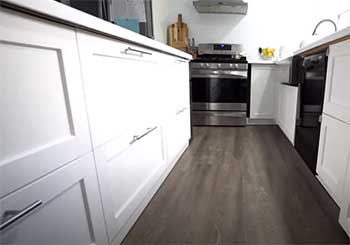
IKEA is like the Swiss Army knife of furniture stores. It’s versatile, accessible, and doesn’t break the bank.
My first stop is always their website or store when I need something functional yet stylish.
Their Scandinavian-inspired designs—clean lines, neutral colors, and clever storage—fit almost any space.
Take their KALLAX shelving unit: for under $100, I got a piece that works as a room divider, bookshelf, or even a TV stand.
The affordability is unmatched. I’ve bought lamps for $10, dining tables for $150, and sofas for under $500. This price point makes IKEA a go-to for budget-conscious shoppers like me when I was a broke college student or moving into my first place.
Their flat-pack system keeps costs low, and I appreciate the transparency of their pricing—no hidden fees or surprise markups.
Another win is their sustainability push. IKEA’s been vocal about using recycled materials and aiming for 100% renewable energy in production by 2030. I feel good knowing my $20 side table might have a smaller environmental footprint than expected.
Plus, their 365-day return policy is a safety net. I once returned a desk after realizing it didn’t fit my space—no hassle, no questions.
- The Downsides of IKEA
But IKEA isn’t perfect. The biggest gripe?
Assembly. I’ve spent hours wrestling with Allen wrenches and cryptic instructions. My BILLY bookcase took two hours to build, and I’m no stranger to DIY. If you’re not handy or patient, this can be a dealbreaker.
The quality, too, can feel hit-or-miss. Most IKEA furniture uses particleboard or MDF, which doesn’t always hold up. My old IKEA desk wobbled after a year, and a drawer on my MALM dresser chipped easily.
Customization is another weak spot. While IKEA offers modular systems like their PAX wardrobes, you’re stuck with their preset colors and sizes. If you want a unique look, you’re out of luck unless you’re ready to hack it yourself.
Delivery, while affordable, can be slow—my last order took two weeks to arrive. And don’t get me started on the in-store experience. The maze-like layout is fun until you’re lost, carrying a 50-pound box, and craving meatballs.
Living Spaces: The Upscale, Customizable Choice
- What I Love About Living Spaces?
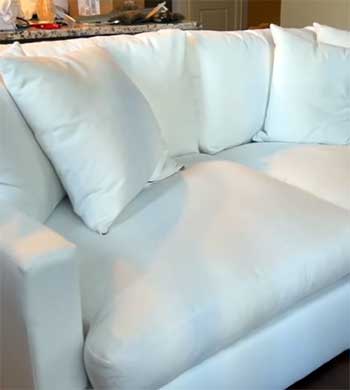
Living Spaces feels like the grown-up version of furniture shopping.
Their showrooms are sleek, their staff is attentive, and their furniture screams quality.
I bought a custom sectional from them, picking the fabric, color, and configuration to match my living room perfectly.
This level of personalization is a game-changer.
Whether you want a velvet sofa in emerald green or a rustic oak dining table, Living Spaces delivers options IKEA can’t touch.
Their quality leans higher-end. Many pieces use solid wood or durable engineered materials, which feel sturdier than IKEA’s particleboard. My sectional, for instance, has held up through three years of daily use, still looking brand-new.
Delivery is another plus. Their white-glove service—where they set up the furniture in your home—is a lifesaver if you dread assembly. It costs more (starting at $99), but the convenience is worth it when you’re dealing with a 200-pound bed frame.
Living Spaces also nails the in-store experience. Their showrooms are curated, with cozy vignettes that inspire. I spent an hour sipping coffee in their store, chatting with a salesperson who helped me visualize how a dining set would fit my space. It’s less chaotic than IKEA’s warehouse vibe, and I felt like my needs were prioritized.
- The Downsides of Living Spaces
The biggest drawback? Price. Living Spaces isn’t budget-friendly. A decent sofa starts at $500, and premium pieces can hit $5,000 or more.
When I was furnishing on a tight budget, Living Spaces felt out of reach. Their return policy is also stricter—7 to 30 days, depending on the item, with potential restocking fees. I once considered returning a chair but decided against it after learning about the 15% fee.
Sustainability is another area where Living Spaces lags. While they offer some eco-friendly lines, they’re not as vocal or committed as IKEA. If green living is a priority, you might find their options lacking.
And while their delivery is top-notch, the cost can sting. My sectional delivery was $150, compared to IKEA’s $39 for a similar-sized item. For budget shoppers, these extras add up fast.
A Deep Comparison of IKEA And Living Spaces
- Price and Value
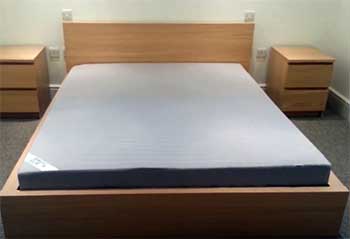
When I’m pinching pennies, IKEA is my go-to. Their prices are unbeatable for starter furniture or temporary solutions. A queen bed frame for $200?
A coffee table for $50? Yes, please. But I’ve learned that “cheap” sometimes means “temporary.”
My IKEA furniture often needed replacing after a few years, especially in high-use areas like my kitchen.
Living Spaces, on the other hand, feels like an investment. Their $1,200 sofa costs more upfront but lasts longer. I’ve had friends who bought Living Spaces dining sets that still look pristine after a decade.
If you’re settling into a forever home, their pieces offer better value over time. But for renters or those on a budget, the price tag can feel daunting.
- Design and Aesthetic
IKEA’s designs are iconic—think sleek, minimalist, and universally appealing. Their furniture fits small spaces like my old 600-square-foot apartment, where every inch counts.
But the downside is the “IKEA look.” Walk into any millennial’s home, and you’ll spot a POÄNG chair or LACK table. It’s stylish but not unique.
Living Spaces offers more variety. Their catalog spans modern, traditional, industrial, and bohemian styles. I love how I could order a mid-century modern sofa in mustard yellow or a farmhouse-style dining table. Their pieces feel like statement-makers, but you pay for that individuality. If you want furniture that stands out, Living Spaces has the edge.
- Quality and Durability
I’ve had mixed experiences with IKEA’s quality. Their particleboard furniture is functional but not built to last. My IKEA dining table scratched easily, and a bookshelf sagged under heavy books. Higher-end IKEA lines, like their solid pine pieces, are better, but they’re still not heirloom quality.
Living Spaces uses more solid wood and durable materials. My custom sectional feels solid, with no creaks or loose seams. Their furniture is designed for longevity, which justifies the cost if you’re in it for the long haul. However, some of their budget lines still use engineered wood, so you have to read the fine print.
- Customization and Flexibility
IKEA’s modular systems, like PAX or BESTÅ, offer some flexibility, but you’re limited to their designs. I customized a PAX wardrobe for my bedroom, but I could only choose from their set colors and configurations. It worked, but it wasn’t truly “mine.”
Living Spaces shines here. I spent 30 minutes with a salesperson tweaking my sofa’s size, fabric, and leg style. They also offer custom dining tables, beds, and even rugs. This level of personalization makes Living Spaces ideal for picky shoppers or those with specific design needs.
- Assembly and Delivery
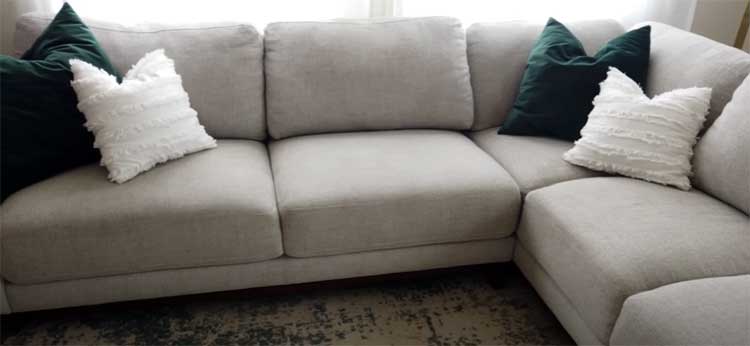
IKEA’s flat-pack model saves money but costs time. I’ve spent entire weekends assembling furniture, cursing at missing screws or unclear diagrams. If you enjoy DIY, it’s fine, but I’ve had moments where I’d pay anything to skip it.
Living Spaces’ white-glove delivery is a dream. They brought my sectional, set it up, and took away the packaging—all in under an hour. But the $150 delivery fee hurt, especially compared to IKEA’s $39 starting point. If convenience is your priority, Living Spaces wins; if cost is, IKEA’s your pick.
- In-Store and Online Experience
Walking into an IKEA is an adventure. The showroom inspires, but the self-serve warehouse and long checkout lines can frustrate. Their online store is user-friendly, but stock issues are common—I’ve had items sell out mid-checkout.
Living Spaces feels more boutique. Their stores are less overwhelming, and salespeople are there to guide you. Their website is polished, with 3D room planners and detailed product specs. But their smaller store network means you might not have a showroom nearby, unlike IKEA’s widespread locations.
- Sustainability and Ethics
IKEA’s sustainability efforts impress me. They use recycled wood, aim for circular production, and even offer buy-back programs for old furniture. I returned an old chair to IKEA and got store credit, which felt like a win for both my wallet and the planet.
Living Spaces is less transparent. They have eco-friendly collections, but details are sparse. I couldn’t find clear info on their sourcing or recycling practices. If sustainability matters to you, IKEA’s commitment is more reassuring.
- Warranty and Returns
IKEA’s 365-day return policy is hard to beat. I’ve returned items months later with no issues. Their warranties (1-10 years) cover manufacturing defects, but wear and tear isn’t included. Living Spaces offers 1-5 year warranties, with optional extended plans, but their return window is tighter. I hesitated to buy a pricey item knowing I had only 7 days to return it if I changed my mind.
Who Are These Brands For?
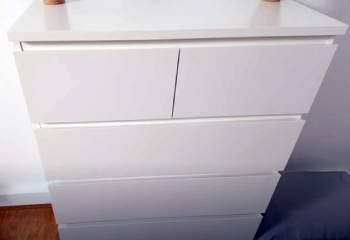
IKEA is for budget shoppers, renters, or anyone who loves modern design without the hefty price tag.
It’s perfect for furnishing a first apartment, dorm, or temporary space.
I relied on IKEA when I moved cross-country and needed furniture fast without draining my savings.
Living Spaces suits those with bigger budgets or long-term homes.
If you’re ready to invest in custom, durable pieces, their flexibility and quality are worth it. I turned to Living Spaces when I bought my house and wanted furniture that felt personal and built to last.
My Personal Takeaways
After years of shopping at both, I’ve learned neither is “better”—it depends on your needs. IKEA saved me when I was starting out; their affordability and style got me through lean times.
Living Spaces elevated my home when I was ready for something more tailored. If you’re debating between them, ask yourself: What’s my budget? How long do I need this furniture to last? Do I want customization or quick solutions?
Your answers will point you to the right choice.
Frequently Asked Questions (FAQ)
Yes, many Living Spaces products use solid wood, especially in higher-end pieces like dining tables and bed frames. However, some budget items use engineered wood or veneers, so check product descriptions carefully.
Living Spaces is often considered a close equivalent due to its wide furniture range and accessibility, but it leans more upscale. Other alternatives include Target or Wayfair for budget-friendly, modern designs similar to IKEA’s.
Conclusion: Your Furniture, Your Choice
You’re standing at a crossroads, trying to decide between IKEA and Living Spaces for your next furniture purchase. I’ve been there, weighing affordability against quality, style against durability. IKEA offers unbeatable prices and modern designs, perfect if you’re starting fresh or need flexible, budget-friendly pieces.
Living Spaces brings customization and sturdier materials, ideal for creating a lasting, personalized home. Use my insights—price, design, quality, and more—to guide your decision. Whatever you choose, make sure it fits your lifestyle and budget. You’ve got this—happy shopping!
